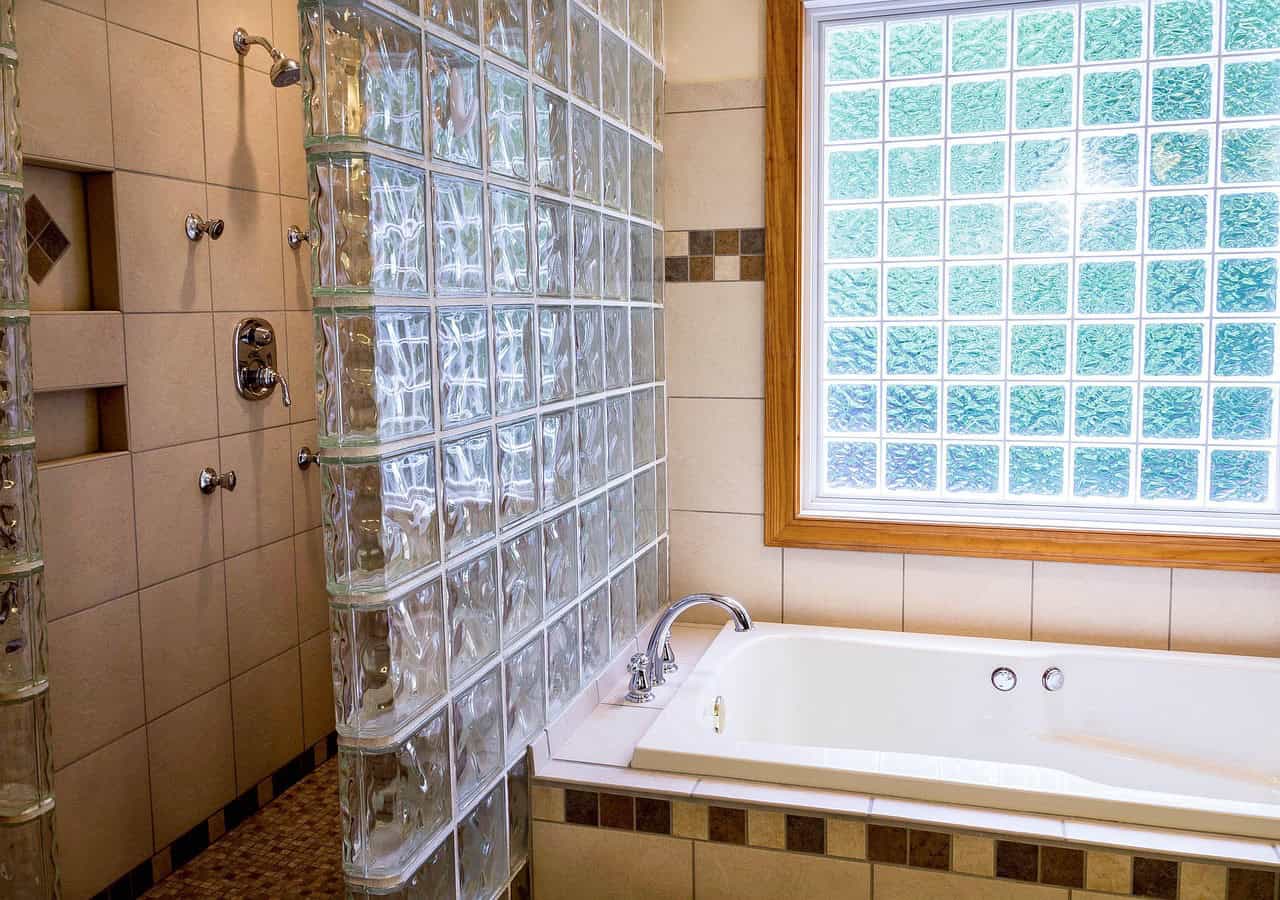Adding body sprays to your shower requires a new diverter valve and trim kit. This diverter valve and trim kit will receive warm water from your shower mixing valve and then direct that water to your various spray outlet groups.
This system includes a 6-setting shower diverter that allows you to turn on the showerhead, body sprays, or both at the same time! The system also includes a drop elbow for your hand shower. If you’re planning a custom shower system with body sprays and jets, consulting a professional plumber corona service can ensure proper installation and optimal water pressure for the best shower experience.
Determine the Water Pressure
High-pressure water jets in a shower provide an invigorating experience. They also help to rinse away soaps and shampoos more efficiently, leaving your skin feeling refreshed and clean. However, higher water pressure can also increase your household water usage. For this reason, high-pressure showers may not be suitable for households with strict water-saving requirements.
The amount of water used during a shower depends on the flow rate, which can vary depending on the shower head, your household plumbing, and any water-saving features you may have installed. The flow rate is measured in gallons per minute (GPM), and it is determined by measuring the volume of water that flows through your showerhead over one minute.
Having too low of a water supply pressure can cause your shower system to feel weak and lackluster, which can be disappointing for you and your guests. The good news is that you can improve your water pressure by testing your water supply. This can be done by purchasing a water pressure gauge from your local hardware store. Turn off all your water appliances and fixtures, and then measure the water pressure in your home with the gauge.
If the pressure is lower than you want it to be, you can install a showerhead with a higher flow rate, or you can use a pressure booster to help boost your water supply. You can also try reducing your water usage by taking showers during off-peak times.
Some shower systems have pressure loops, which can improve your water flow by directing it to the spray outlets more effectively. However, you should be aware that these can add extra elbows into your piping which can reduce your water pressure. You can find conflicting information online about whether or not you need a pressure loop with different shower systems; even Delta says that it’s optional with their products.
Determine the Water Temperature
As with any shower system the first step is to make sure there will be adequate water pressure. This can be determined by having the installer test your water pressure at the location where the shower will be installed. Then they will be able to determine what type of rough-in valve and trim kit will be needed to create the shower system. Then the plumber can plan where the shower head, body sprays, and control will be located. The best way to do this is by drawing a complete shower layout on paper. This will help them thoughtfully consider how to arrange the plumbing fixtures and also allow them to measure to make sure there will be adequate space for the necessary piping.
Once the plumber has decided on how to place the shower head, body sprays, and controls they must then think about how to run the piping in order to power them. In a standard shower there is a hot and cold water line coming into the home which supplies all of the shower heads, hand showers, and bathtubs. This piping is normally kept at a high temperature so that when a shower head or body spray is turned on the water will be hot enough to comfortable use.
Shower systems with jets are very different and require a different type of plumbing setup which is why it is important to have an experienced plumber help out. To power the jets the plumber will need to run a dedicated set of piping which is called a pressure loop. This piping is similar to what is used in industrial HVAC and other factory processes.
Install the Diverter Valve
The shower mixing valve and diverter are the heart of any shower system with body sprays. These fixtures take in the hot and cold water lines, mix it with your chosen shower cartridge, and direct it to the different spray outlets. As you will see in the diagram below, each spray outlet has a corresponding pressure loop. These are basically rings of piping designed to keep the flow rate from each individual spray at a consistent level. This ensures each body spray will deliver a full, rich spray experience.
Most Delta shower systems include a High Flow Multichoice Universal Rough-in Valve (R10000-UNWSHF) but there are several variations available including one that supports adding a tub spout. If you plan on installing a tub spout with your system then you will need to switch to the R10000-UNWS version of this valve. This version includes a stub out at the bottom of the valve that can accept a standard tub spout.
If you are only planning on a wall mount showerhead and hand shower then a 3-setting diverter will work fine. However, if you want to install body sprays along with the showerhead then a 6-setting diverter is required. A 6 -setting diverter has 2 separate individual settings as well as 1 shared setting that will send water to both the wall mount showerhead and body sprays.
The 6-setting valve also uses all 3 of the valve outlet ports. Water is run from port 1 up to the wall mount showerhead, from port 2 to a drop elbow that connects to your hand shower hose and from port 3 to the body spray pressure loop. All of these are shown in the diagram below.
Install the Body Sprays

When installing a shower system with body sprays it is important to be thoughtful about how they are positioned on the walls. Body sprays typically require a different layout than a standard showerhead as they are aimed horizontally instead of vertically. They also need to be positioned so they can fully encompass the user with water.
Having your installer frame your shower with this in mind will help you avoid a future headache. There is nothing worse than having a great system that you can’t enjoy because it’s too low on water pressure or the top-level body spray is pointing right into your head.
Another factor to consider when positioning your body sprays is height. Since body sprays are typically positioned at shoulder or upper back height they need to be able to reach all users. That’s why it’s often a good idea to have your body sprays aimed at the lower leg area for seated bathers.
The other thing to remember is that if you are going to have a 3 or more body sprays in your shower they will all need a pressure loop. A pressure loop is basically a ring of pipe with various fittings that will ensure that each spray will have the same flow and temperature of water no matter where it is located on the body. This is especially important when using a shower setting that will send water to both the showerhead and body sprays at the same time. In this situation it is common for each individual showerhead and group of body sprays to be controlled by a separate diverter valve. That way the user can decide whether to use just the showerhead or all of the body sprays at a given time.
Install the Shower Head
Once the body sprays are in place and the diverter valve is installed it’s time to start installing your shower head. First make sure that you turn off the water supply to the shower, both cold and hot. This is not something you want to forget about or it could result in a spraying mess and potentially flood your bathroom.
When installing a new showerhead, you’ll want to carefully plan out your layout. Since body jets spray horizontally it’s important to install your showerhead in a way that will maximize coverage. You’ll also need to plan out how the water pipes will run behind the wall and to your shower drain.
This is where it pays to have an experienced plumber handle your installation as you’ll need to use the correct size plumbing fixtures and ensure the correct piping is used. Ideally you should install the mixing valve at around waste height, or about 36” from the floor and then use the diverter to direct the water to your various spray outlets.
It’s also a good idea to install the on/off shower control close by and the diverter control further in. This will help with accessibility and can make your shower system more user-friendly.
Also remember to follow the instructions on your specific shower system as they may vary slightly from brand to brand. For example, some shower systems require a different kind of plumbing fixture or they might need to be plumbed with a special cross-tee fitting. It’s always best to work with an experienced plumber when working with a custom shower system. Their experience will save you money and hassle in the long run.

